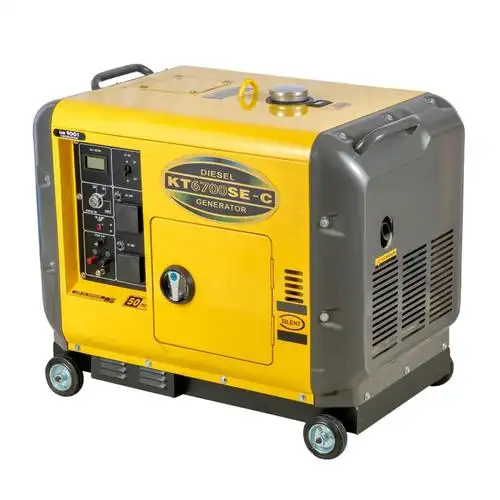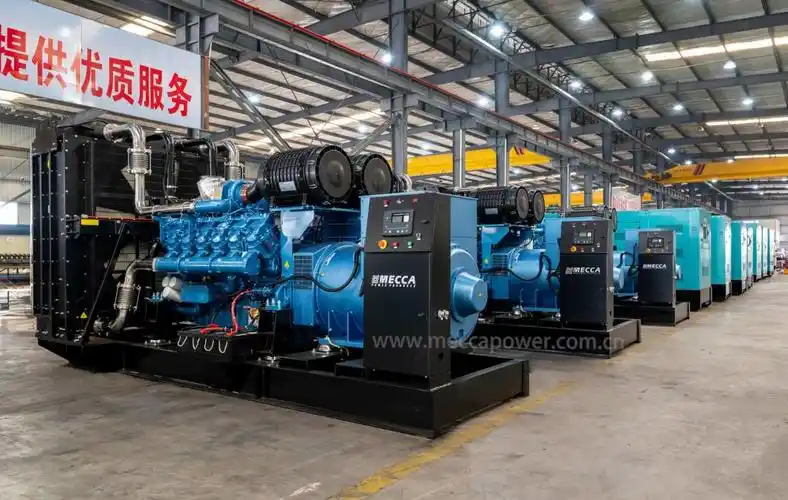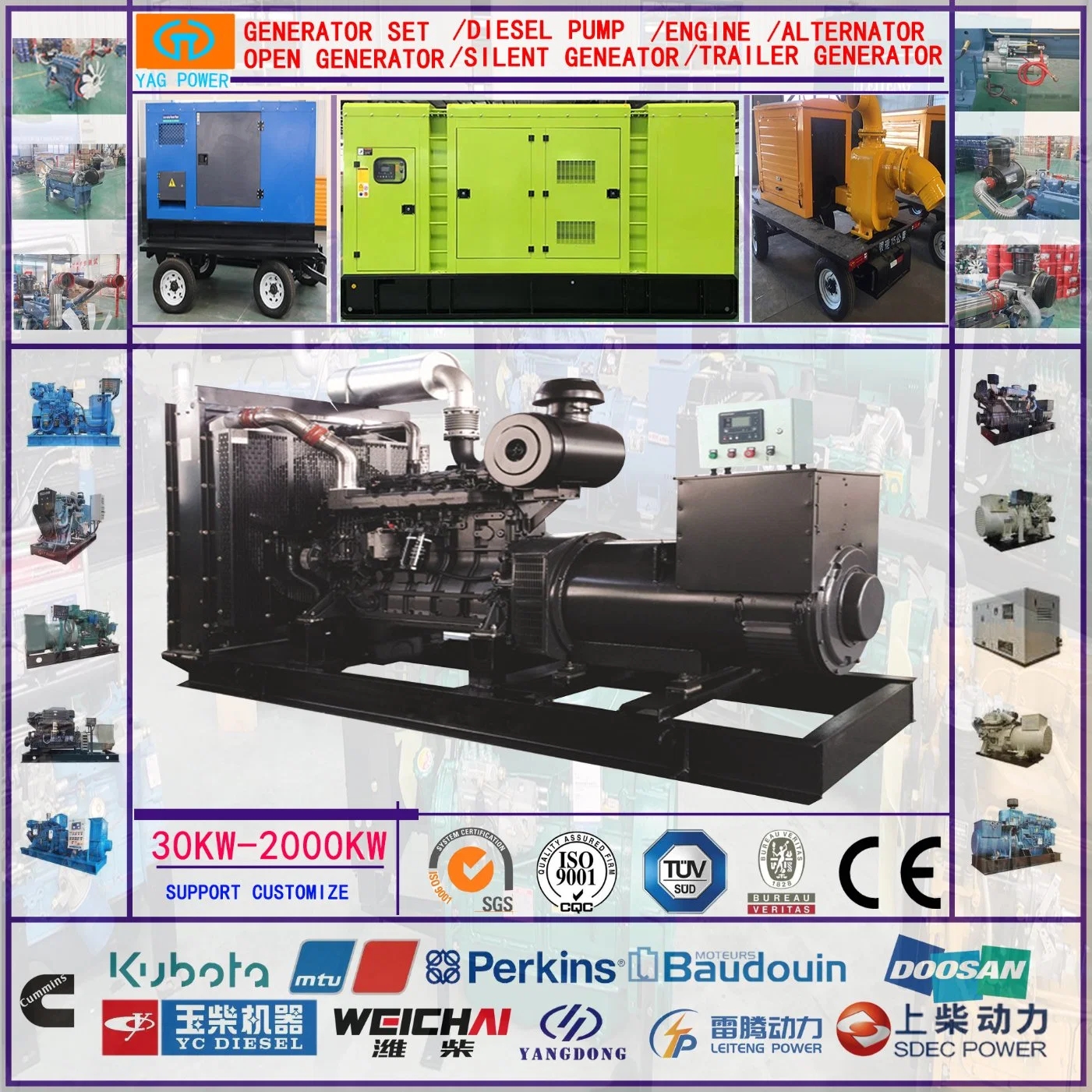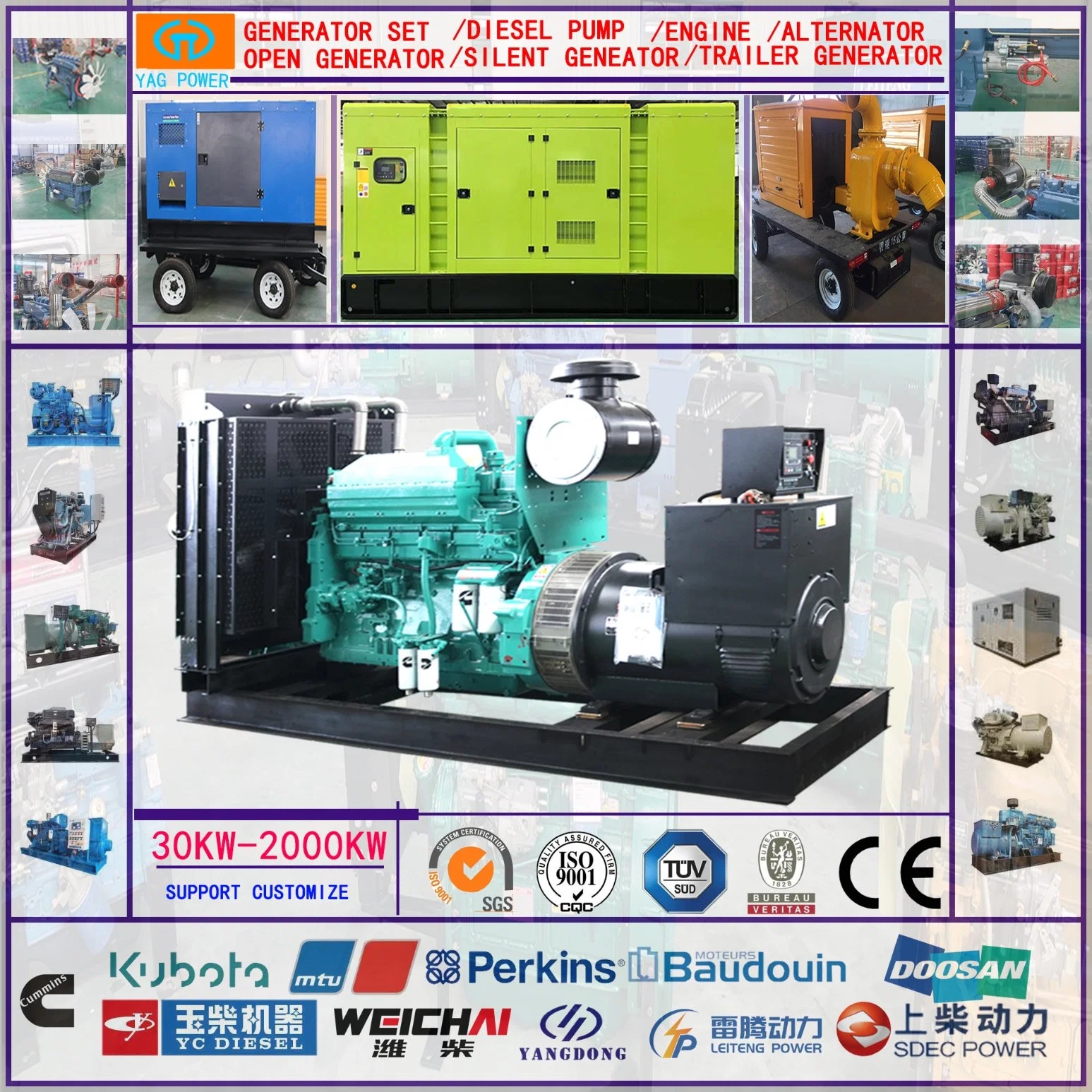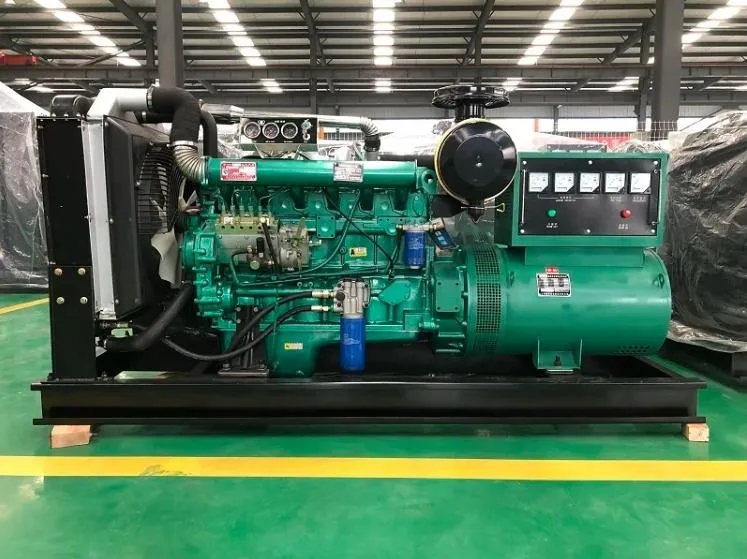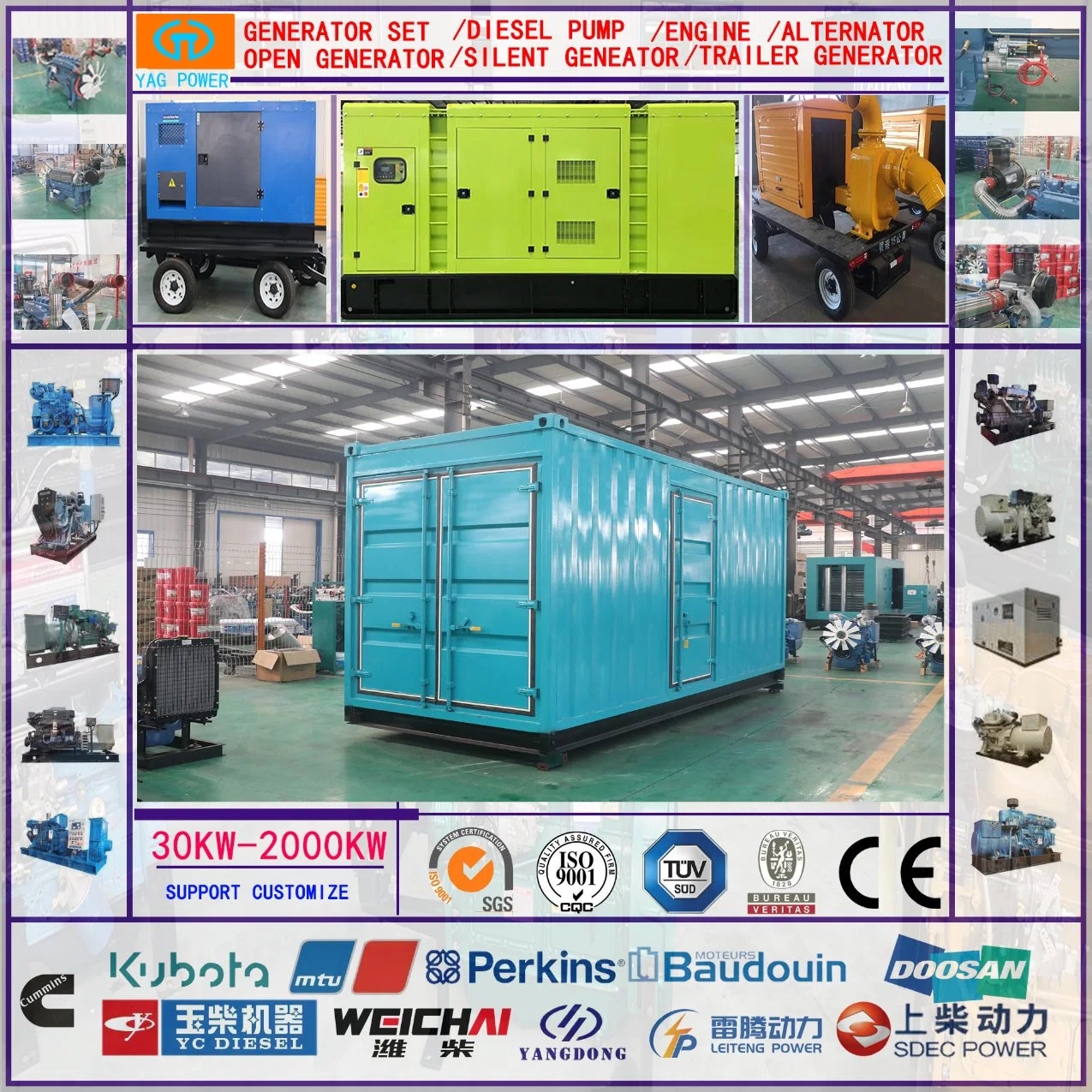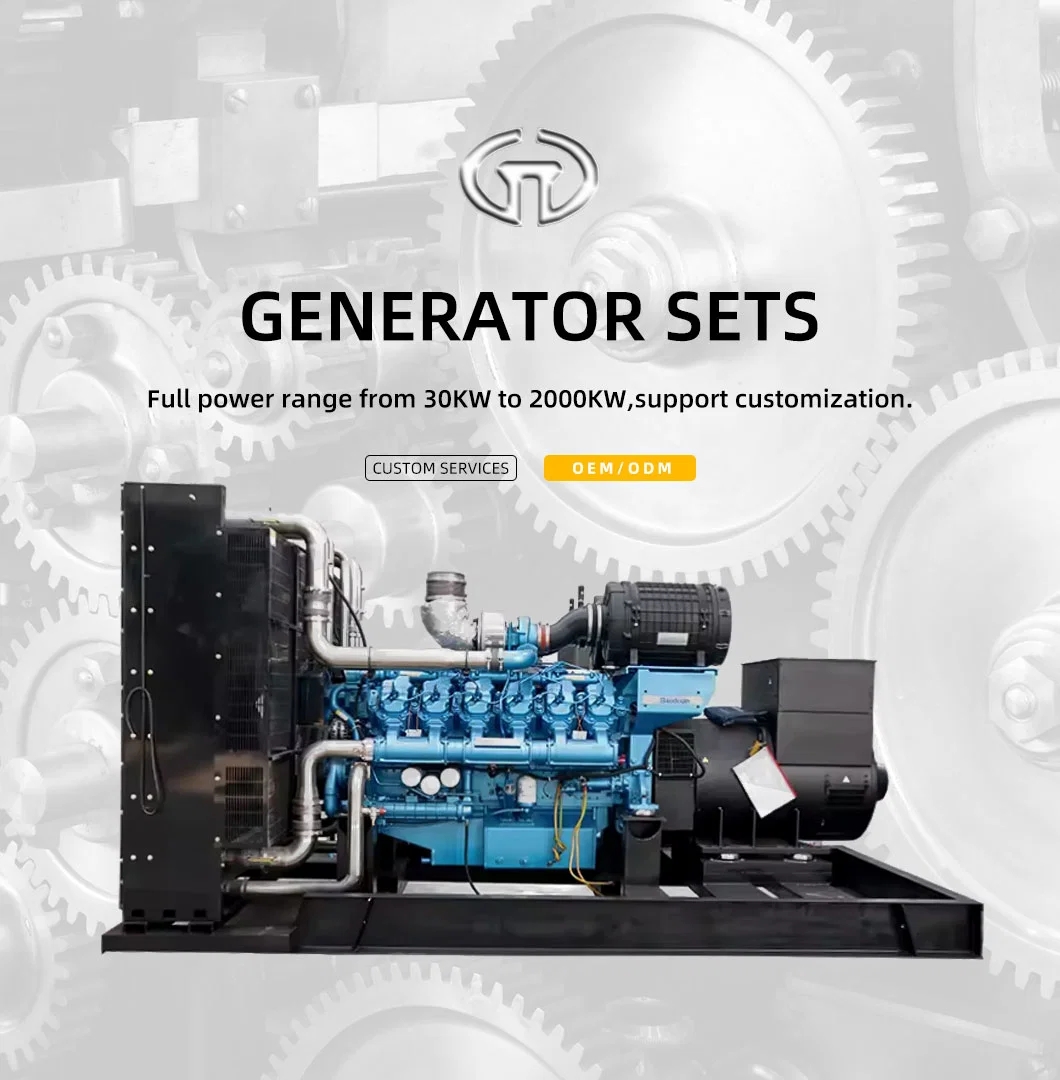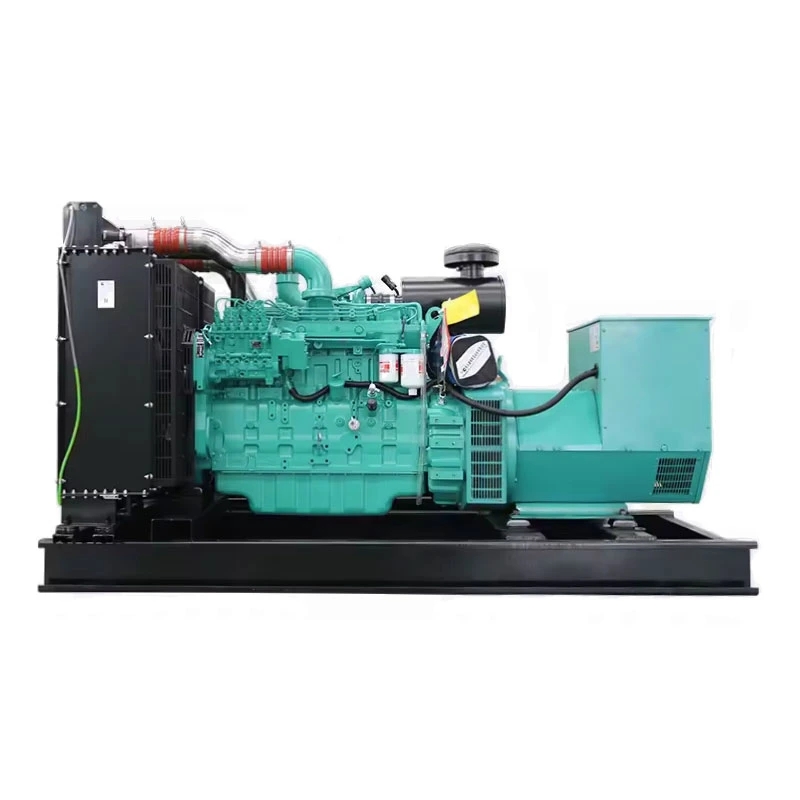Table of Contents
Toggle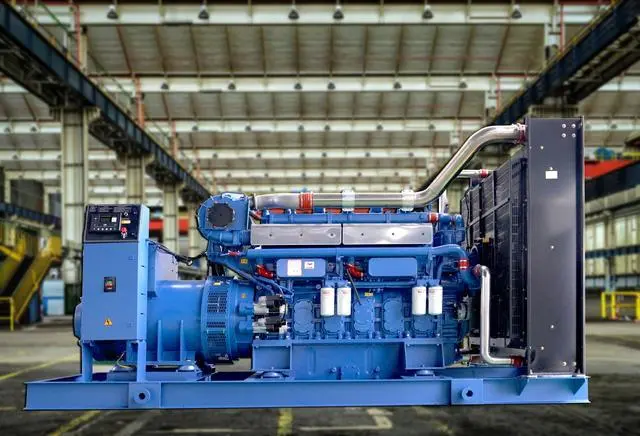
In today’s industrial landscape, reliable power sources are crucial for maintaining operations and ensuring productivity. Industrial diesel generators stand out as a cornerstone of backup power systems, offering robust performance and dependability when the main power supply falters. These powerhouses play a vital role in various sectors, from manufacturing plants to healthcare facilities, providing a lifeline during unexpected outages and safeguarding critical processes.
Choosing the right industrial generator is a task that requires careful consideration and planning. This article aims to guide readers through the essential factors to weigh when selecting an industrial diesel generator. It will cover topics such as assessing power requirements, evaluating different brands and models, understanding emission standards, and sizing generators correctly. By the end, readers will have a comprehensive understanding of how to pick a generator that meets their specific needs and budget constraints.
Understanding Industrial Diesel Generators
Industrial diesel generators are essential power sources that provide reliable electricity in various settings. These machines play a crucial role in maintaining operations during power outages and supplying energy in remote locations. To grasp their significance, it’s important to understand what they are, how they function, and their key components.
What is an Industrial Diesel Generator?
An industrial diesel generator is a robust machine that combines a diesel engine with an electric generator to produce electricity. It converts the chemical energy stored in diesel fuel into electrical power through a series of mechanical and electromagnetic processes. These generators are widely used in industries, manufacturing plants, hospitals, communication towers, and other facilities that require a dependable power supply.
How Do Industrial Diesel Generators Work?
The working principle of an industrial diesel generator is based on the law of energy conversion. The process begins with the injection of diesel fuel into the combustion chamber, where it mixes with air. Unlike gasoline engines, diesel generators rely on high compression ratios to ignite the fuel spontaneously when it reaches a critical temperature and pressure.
Once ignited, the fuel undergoes rapid combustion, causing the expansion of gasses. This expansion forces the piston down the cylinder, creating mechanical energy in the form of linear motion. This movement, known as the power stroke, is a crucial step in converting chemical energy into mechanical energy.
The linear motion of the piston is then transferred to the crankshaft through a connecting rod. As the piston moves, the crankshaft rotates, creating the rotary motion necessary for generating electrical power. This rotary motion is transmitted to the generator through a mechanical coupling.
The generator consists of two main parts: the rotor and the stator. The rotor, a cylindrical component surrounded by magnets, spins inside the stator, which contains fixed copper windings. As the rotor spins, it creates a magnetic field that passes through the stator’s copper wiring, inducing an electromotive force (EMF) following Faraday’s law of electromagnetic induction.
Most industrial diesel generators produce alternating current (AC). The generated AC voltage can be further processed through an alternator to ensure a stable and constant supply of electricity. In some applications, the AC may be converted to direct current (DC) using a rectifier for specific uses or to charge batteries.
Key Components of Industrial Diesel Generators
Industrial diesel generators comprise several essential components, each serving a specific function in the power generation process:
- Diesel Engine: The core of the generator, responsible for converting diesel fuel’s chemical energy into mechanical energy.
- Alternator (Generator Head): Transforms the mechanical energy from the engine into electrical energy.
- Fuel System: Consists of a fuel tank, fuel pump, and injectors to store and supply fuel to the engine.
- Cooling System: Prevents overheating by removing excess heat from the engine, typically using a radiator, coolant, and fan.
- Exhaust System: Removes combustion gasses and reduces noise, including an exhaust pipe and muffler.
- Lubrication System: Ensures proper lubrication of moving parts to reduce friction and wear, comprising an oil pump and filter.
- Control Panel: Acts as the generator’s brain, monitoring and managing its operation, including controls for starting, stopping, and regulating the generator.
- Voltage Regulator: Maintains a stable output voltage to protect connected equipment from fluctuations.
- Battery and Starter Motor: Provides initial power to start the diesel engine.
- Governor: Regulates engine speed to maintain a constant RPM, ensuring consistent electricity frequency.
- Frame and Enclosure: Protects the generator components and reduces noise, available in open or closed designs depending on the installation environment.
Understanding these components and their functions is crucial for selecting, operating, and maintaining industrial diesel generators effectively.
Assessing Your Power Requirements
Accurately assessing power requirements is a crucial step in selecting the right industrial diesel generator. This process involves a thorough evaluation of electrical loads, understanding power ratings, and planning for future needs. By carefully analyzing these factors, businesses can ensure they choose a generator that meets their current and future power demands.
Calculating Your Power Needs
To determine the appropriate generator size, it’s essential to conduct a comprehensive inventory of all electrical loads. This involves listing every device and appliance that requires power during an outage, including lighting, HVAC systems, machinery, computers, and communication equipment. Each item’s wattage or amperage rating should be noted, which can typically be found on the manufacturer’s label or in the user manual.
When calculating power needs, it’s crucial to consider both running watts and starting watts. Running watts represent the continuous power needed for operation, while starting watts account for the additional power surge required when certain devices start up. For example, a refrigerator might need 800 watts to run but 2,200 watts to start. To ensure accurate sizing, the total power demand should include both types of wattage for all essential equipment.
A practical approach to this calculation involves the following steps:
- List all essential equipment and their respective wattages.
- Identify devices with higher starting wattage requirements.
- Calculate the total running wattage for all items.
- Add the highest starting wattage to the total running wattage.
This sum represents the minimum wattage the generator should provide to sustain operations during an outage.
Standby vs. Prime Power Ratings
Understanding the difference between standby and prime power ratings is crucial when selecting a generator. These ratings determine how the generator can be used and for how long.
Standby power generators are designed for emergency situations when the main power source fails. They typically operate for short durations, such as a few hours at a time, and provide varying outputs as specified. These units are ideal for businesses that experience infrequent power outages and need backup power for critical systems.
Prime power generators, on the other hand, are designed to operate as the primary power source for extended periods or even continuously. They can handle variable loads between 50% and 100% of their prime rating for unlimited hours. Prime generators are suitable for locations without access to the grid or when there are limitations on the amount of power that can be drawn from the main supply.
Here’s a comparison of standby and prime power generators:
| Feature | Standby Power | Prime Power |
|---|---|---|
| Operation Duration | Short periods | Extended or continuous |
| Load Capacity | Varying outputs | 50-100% of rated capacity |
| Cooling Time | Natural cooling between uses | Designed for continuous operation |
| Maintenance | Less frequent | More frequent due to continuous use |
| Cost | Generally lower | Higher due to robust design |
Considering Future Growth
When selecting a generator, it’s wise to factor in potential expansions or increases in electrical demand. This foresight ensures that the chosen generator remains sufficient for future needs, avoiding the need for frequent upgrades.
To account for future growth:
- Review organizational growth plans and industry trends.
- Anticipate potential increases in power requirements.
- Consider adding a 10-25% capacity buffer to the calculated power needs.
- Evaluate the possibility of load management to optimize generator size.
By considering future growth, businesses can invest in a generator that provides long-term value and adaptability to changing power demands. This approach may involve selecting a slightly larger generator or implementing a modular system that allows for easy expansion as needs evolve.
Factors to Consider When Choosing a Generator
When selecting an industrial diesel generator, several crucial factors come into play. These considerations ensure that the chosen generator meets the specific needs of the facility while providing reliable and efficient power.
Power Output and Capacity
The power output and capacity of a generator are paramount in the selection process. It’s essential to choose a generator that not only meets current power requirements but also accommodates future growth. To calculate the right generator size, one should:
- List all items the generator will power
- Determine the starting and running wattage for each piece of equipment
- Calculate the total power requirement by adding up the kW or KVA figures
For retail operations, a general formula can be applied: 50 kilowatts + 10 watts per square foot. Other commercial applications may use 50 kilowatts + 5 watts per square foot.
It’s advisable to select a generator with a capacity 10-20% larger than the calculated need. This buffer allows for potential equipment updates and helps manage any underperformance due to adverse conditions such as high temperatures or altitudes.
Fuel Efficiency and Tank Size
Fuel efficiency is a critical factor in the long-term operation of a diesel generator. The fuel consumption rate, measured in Liters Per Hour (LPH) or Gallons Per Hour (GPH), varies based on the generator’s load capacity. To illustrate this, consider the following fuel consumption estimates for different generator sizes:
| Generator Size (kW) | 1/4 Load (gal/hr) | 1/2 Load (gal/hr) | 3/4 Load (gal/hr) | Full Load (gal/hr) |
|---|---|---|---|---|
| 20 | 0.6 | 0.9 | 1.3 | 1.6 |
| 100 | 2.6 | 4.1 | 5.8 | 7.4 |
| 500 | 11.0 | 18.5 | 26.4 | 35.7 |
Diesel generators are generally more fuel-efficient compared to gasoline alternatives. To optimize fuel efficiency:
- Implement proper operating procedures
- Use load management systems
- Consider variable-speed engines that adjust speed based on load demand
- Perform regular maintenance and timely servicing
- Use high-quality engine oil and fuel
The tank size should be chosen based on the expected runtime and fuel consumption rate. A larger tank allows for extended operation without refueling but may increase the overall footprint of the generator.
Noise Levels and Emissions
Noise levels and emissions are increasingly important factors, especially in urban or noise-sensitive areas. Generator noise levels can range from 75-85 dB(A) at one meter for acoustically enclosed units. However, without proper attenuation, noise levels can reach up to 130 dB(A) for engine exhaust.
To address noise concerns:
- Use sound-attenuating enclosures, which can reduce noise levels by up to 40 dB(A)
- Install exhaust silencers and isolation mounts
- Choose a location as far as possible from sensitive areas
- Consider newer models with improved internal combustion controls and vibration reduction
Emissions standards must also be considered. Modern diesel generators are designed to meet stringent environmental regulations. When selecting a generator, ensure it complies with local and national emissions standards to avoid potential legal issues and minimize environmental impact.
By carefully evaluating these factors – power output and capacity, fuel efficiency and tank size, and noise levels and emissions – organizations can select an industrial diesel generator that provides reliable power while meeting operational, environmental, and regulatory requirements.
Evaluating Generator Brands and Models
When selecting an industrial diesel generator, evaluating different brands and models is crucial to ensure the best fit for specific needs. This process involves examining top manufacturers, comparing features and specifications, and considering customer feedback.
Top Manufacturers in the Market
The industrial generator market boasts several reputable manufacturers known for their quality and reliability. Some of the leading brands include:
- Caterpillar (CAT): Renowned for its construction equipment, CAT offers a wide range of diesel, gas, and mobile generator sets suitable for various applications.
- Cummins: Specializes in mobile, vehicle-mounted generators for commercial use, serving industries such as utilities, communications, and disaster relief.
- Generac: While known for home generators, Generac also produces a variety of industrial generators, including gas, diesel, and bi-fuel options.
- Kohler: With a global presence, Kohler manufactures diesel, gas, and mobile generators, along with switchgear and accessories.
- MTU: Offers standby diesel power systems and gas CHP sets, providing custom setups and white-glove service.
Other notable manufacturers include AKSA, Doosan, Atlas Copco, and Kubota, each offering unique features and specializations to cater to diverse industrial needs.
Comparing Features and Specifications
When evaluating generator models, it’s essential to compare key features and specifications:
- Power Output: Ensure the generator’s capacity meets current and future power requirements. Consider models offering 10-20% more capacity than calculated needs.
- Fuel Type: Choose between diesel, natural gas, or bi-fuel options based on availability, cost, and environmental considerations.
- Noise Levels: For noise-sensitive areas, look for models with lower decibel ratings. Some manufacturers offer super-quiet options as low as 60-65 dB.
- Efficiency: Compare fuel consumption rates, often measured in Liters Per Hour (LPH) or Gallons Per Hour (GPH) at different load capacities.
- Emissions Compliance: Verify that the generator meets local and national emissions standards to avoid legal issues.
- Control Systems: Look for advanced control panels offering comprehensive monitoring and management capabilities.
- Alternator Design: Consider factors such as winding pitch, insulation class, and harmonic distortion levels.
- Portability: For mobile applications, evaluate the generator’s size, weight, and trailer options.
Reading Customer Reviews and Testimonials
Customer feedback provides valuable insights into real-world performance and reliability. When researching generator brands and models:
- Seek reviews from businesses in similar industries or with comparable power needs.
- Pay attention to comments about reliability, fuel efficiency, and after-sales support.
- Look for testimonials regarding the manufacturer’s customer service and maintenance support.
- Consider the availability of parts and servicing in your area.
- Check for any recurring issues or complaints across multiple reviews.
By thoroughly evaluating top manufacturers, comparing key features, and considering customer experiences, businesses can make informed decisions when selecting an industrial diesel generator. This comprehensive approach helps ensure the chosen generator meets specific power requirements while providing long-term reliability and efficiency.
Understanding Generator Tiers and Emissions Standards
The Environmental Protection Agency (EPA) has implemented a tiered system of regulations to reduce harmful emissions from diesel engines, including those used in industrial generators. This system has evolved over time, becoming increasingly stringent to improve air quality and protect human health and the environment.
Tier 1 to Tier 4 Final Explained
The EPA’s tier system for diesel engines consists of four main levels, each progressively more stringent in terms of emission control:
- Tier 1: Introduced in 1996, Tier 1 standards focused on diesel equipment under 37 kW (50 hp). This initial phase aimed to reduce emissions of nitrogen oxides (NOx), hydrocarbons (HC), carbon monoxide (CO), and particulate matter (PM).
- Tier 2 and Tier 3: Published in 1999 and implemented from 2001 to 2008, these tiers required more sophisticated engine designs and advanced performance to meet stricter criteria.
- Tier 4: The most stringent level, Tier 4 standards began phasing in from 2008. Tier 4 Final, the current standard for most new generators, requires near-zero emission levels.
To achieve Tier 4 Final compliance, manufacturers have implemented various technologies, including:
- Engine Design Technologies
- Fuel & Lubricant Technologies
- Exhaust Add-ons and Aftertreatment Technologies (e.g., diesel oxidation catalysts, diesel particulate filters, and selective catalytic reduction systems)
EPA Regulations and Compliance
EPA regulations apply to manufacturers of diesel engines and generator sets. The key points of compliance include:
- Applicability: Generally, non-road diesel engines and gensets rated at 56 kW and higher, considered as prime generators, must comply with Tier 4 standards.
- Exceptions: Emergency standby generators are subject only to Tier 2 and Tier 3 standards, not Tier 4. This exemption applies as long as the units are used strictly for emergency applications and operate for a maximum of 200 hours per year.
- Labeling: EPA-compliant engines must have proper labeling indicating compliance with national standards and regulations for nonroad compression-ignition engines.
- Transition Program for Equipment Manufacturers (TPEM): This program allows manufacturers to delay installing Tier 4-compliant engines in their products, subject to specific production limitations and paperwork requirements.
Balancing Emissions and Cost
Implementing stricter emission standards has implications for both manufacturers and end-users:
- Technological Advancements: Manufacturers have invested in research and development to create engines that meet Tier 4 Final standards while maintaining performance.
- Cost Considerations: The advanced technologies required for Tier 4 Final compliance can increase the initial cost of generators. However, these generators often offer improved fuel efficiency, potentially offsetting long-term operational costs.
- Emission Reduction: Tier 4 Final engines achieve significant reductions in harmful emissions:
- Up to 99% reduction in carbon monoxide (CO)
- Up to 90% reduction in hydrocarbons (HC)
- Up to 95% reduction in diesel particulate matter (DPM)
- Up to 99% reduction in nitrogen oxides (NOx)
- Retrofit Options: For older generators not meeting current standards, aftermarket attachments like diesel oxidation catalysts (DOCs) can be installed to reduce emissions and improve compliance.
In conclusion, understanding generator tiers and emission standards is crucial for businesses selecting and operating industrial diesel generators. While compliance with these regulations may present initial challenges, the long-term benefits in terms of environmental protection and potential operational efficiencies make it a worthwhile investment.
Sizing Your Generator Correctly
The Importance of Proper Sizing
Selecting the correct size for an industrial diesel generator is crucial for ensuring optimal performance and longevity. A properly sized generator provides numerous benefits, including increased usable life, consistent production performance, and reduced risk of capacity overloads. It also limits unexpected system failures, decreases the likelihood of asset damage, and enhances personnel safety.
To determine the appropriate generator size, one must follow a basic sizing formula:
- Create a comprehensive list of all items that will be powered by the generator.
- Determine the starting wattage and running wattage for each piece of equipment.
- Calculate the total power requirement by adding up the kW or KVA figures.
Once the total power requirement has been calculated, it is recommended to choose a generator with a capacity that is 10-20% larger than the calculated requirement. This additional capacity provides leeway for future equipment updates and helps manage potential under-performance due to adverse operating conditions, such as extreme temperatures or high altitudes.
Common Sizing Mistakes to Avoid
One of the most common mistakes in generator sizing is selecting a unit that is too small for the intended application. While it may be tempting to opt for a smaller generator to save on costs, this decision can lead to disastrous consequences. An undersized generator can damage both the connected appliances and the generator itself.
Another frequent error is failing to account for motor starting requirements. High inertia motor loads, for example, require the same amount of starting kVA as low inertia loads but place a greater burden on the engine to maintain starting kW due to longer acceleration times.
Overlooking the impact of altitude on generator performance is also a common mistake. Generators typically derate at higher altitudes, with specific percentages varying by fuel type and manufacturer. For instance, a 100 kW diesel generator may derate by 2.5% for every 1,000 feet above 3,500 feet, while a non-turbo 100 kW natural gas generator may derate by 3.5% for every 1,000 feet above 600 feet.
Working with a Professional Sizing Service
Given the complexities involved in generator sizing, working with a professional sizing service can be invaluable. These services often utilize advanced software tools, such as Power Design Pro, which offer several advantages:
- Harmonic analysis to limit harmonic voltage distortion to acceptable levels.
- Customized voltage and frequency tolerances for each load.
- Detailed transient analysis to identify load sequences causing the greatest system transients.
- Support for natural load sequencing, cyclic loading, and user-definable load factors.
- Ability to model load shedding schemes for redundant power solutions.
Professional sizing services can also help navigate local commercial building code requirements and ensure compliance with the National Electrical Code (NEC) guidelines for sizing, installation, and critical safety systems.
By leveraging the expertise of professionals and utilizing advanced sizing tools, businesses can avoid common pitfalls and ensure they select a generator that meets their specific needs while providing reliable and efficient power for years to come.
Cost Considerations and Budget Planning
When selecting an industrial diesel generator, understanding the financial implications is crucial for making an informed decision. This section explores the various cost factors and budget planning considerations that businesses should take into account.
Initial Purchase Price vs. Total Cost of Ownership
The initial purchase price of an industrial diesel generator is just one aspect of the overall cost. To accurately assess the financial impact, businesses must consider the Total Cost of Ownership (TCO). TCO is a financial estimate that helps companies determine both direct and indirect costs of a product or system over its useful life.
To calculate the TCO for an industrial diesel generator, consider the following formula:
TCO = Initial purchase price + Installation cost + (Expected annual fuel expenses × expected lifespan) + (Expected annual maintenance costs × expected lifespan) + (Expected annual extended warranty cost × expected lifespan)
This comprehensive approach provides a more accurate picture of the long-term financial commitment associated with owning and operating an industrial diesel generator.
Installation and Maintenance Costs
Installation costs can vary significantly depending on the complexity of the setup and local requirements. It is advisable to seek professional assistance for a safe and compliant installation. Hiring a licensed electrician or generator installer ensures proper connection to the electrical system and compliance with local regulations.
Maintenance is crucial for the longevity and reliability of the generator. Regular maintenance tasks include:
- Oil and filter changes
- Spark plug checks
- Air filter inspections
- Battery maintenance
- Fuel system checks
Businesses can choose to perform these tasks in-house or hire professional mechanics. The National Renewable Energy Laboratory (NREL) reports that annual diesel generator maintenance costs remain relatively stable across different operating time spans, unlike other power systems where maintenance costs increase with usage.
Financing Options and ROI
Various financing options are available to make the acquisition of an industrial diesel generator more manageable for businesses:
- Equipment Leasing: This option allows companies to pay for the generator over time, preserving cash flow for other operational needs. In many cases, lease payments may be fully tax-deductible under IRS Section 179.
- Structured Debt: Mid-sized and large companies can arrange structured debt financing for critical power equipment.
- Manufacturer Financing: Some generator manufacturers offer financing options with competitive rates and terms.
- Operational Expense Funding: This arrangement transforms what would otherwise be a large capital investment into a predictable monthly operational expense.
When considering financing options, businesses should evaluate the Return on Investment (ROI). Factors influencing ROI include:
- Improved operational reliability
- Reduced downtime during power outages
- Potential energy cost savings during peak demand periods
- Tax benefits from equipment depreciation
By carefully assessing these cost considerations and exploring available financing options, businesses can make a well-informed decision that aligns with their budget and long-term operational needs. Remember that while the initial cost may seem significant, the right industrial diesel generator can provide substantial value over its lifetime through increased reliability and operational efficiency.
Conclusion
The selection of an appropriate industrial diesel generator has a significant impact on the operational efficiency and reliability of any business. By carefully evaluating power requirements, considering various factors like fuel efficiency and emissions standards, and working with professional sizing services, companies can ensure they choose a generator that meets their specific needs. This process, while complex, is crucial to avoid common pitfalls and to guarantee long-term performance and cost-effectiveness.
To wrap up, the journey to select the right industrial diesel generator involves a thorough assessment of current and future power needs, an evaluation of top manufacturers and models, and a careful consideration of budget constraints. By taking these steps and staying informed about the latest technological advancements and regulatory requirements, businesses can make a well-informed decision. This approach not only ensures reliable power supply during critical times but also contributes to overall operational excellence and environmental responsibility.

